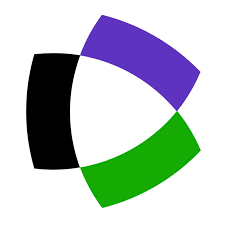Research Article
Issue Editorial Board





Aim & Scope
The Journal of Business in the Digital Age is open access, a blind peer-reviewed international journal published in English and Turkish. JOBDA does not charge authors for submission or publication. It aims to publish high-quality research papers in all related areas of digital business and management especially digital marketing, tourism, management information systems, digital transformation, digital economy, and internet-related studies. JOBDA aims to create and disseminate knowledge for the digital environment in business. The major target is to help bridge the gap between theoretical and practical knowledge by including academic research in this area.
Business in the digital age is a multi-disciplinary area, which should be developed in co-operation with existing fields such as Business Strategy, Economics, New Media, Information Technologies, Marketing, Finance, Supply Chain Management, Tourism, Public Policy, Computer Science and Telecommunications, and Legal Studies. We will encourage papers on current technologies from these areas, as well as publish papers on completely new topics. We also seek proposals for special issues on new topics in the digital age that will create new directions for research.
We are inviting submission of articles in the field of:
• Digital economy
• Electronic commerce
• Internet and social media
• E-Business model
• Consumer behavior
• Data mining
• Big Data
• Industry 4.0
• Business analytics
• E-government
• Public policy and digitalization
• Electronic payments systems and auctions
• IT and services
• Supply chain and inventory management in the digital age
• Legal issues in electronic commerce,
• Mobile commerce
• Developing technologies and innovations
• Accounting information systems
• Public relations in the digital environment
• New media
• Digitalization in tourism
Author Guidelines
Structure and Formatting
Article Structure:
Introduction
State the objectives of the work and provide an adequate background, avoiding a detailed literature survey or a summary of the results. Also the research question(s) should be addressed in the introduction section.
Theory/Background
A Theory section should extend, not repeat, the background to the article already dealt with in the Introduction, and lay the foundation for further work.
Material and methods
Provide sufficient details to allow the work to be reproduced by an independent researcher. Methods that are already published should be summarized and indicated by a reference. If quoting directly from a previously published method, use quotation marks, and also cite the source. Any modifications to existing methods should also be described.
Results
The results should be clear and concise.
Discussion
This should explore the significance of the results of the work, not repeat them. A combined Results and Discussion section is often appropriate. Avoid extensive citations and discussion of published literature.
Conclusions
The main conclusions of the study may be presented in a short Conclusions section, which may stand alone or form a subsection of a Discussion or Results and Discussion section.
-----------------------------------------------------------
Formatting:
1. Articles should be provided on Microsoft Word format and must be sent online.
2. In articles, page layout has to be arranged as to leave 2,5 cm from above, 2,5 cm from below, 2,5 cm from left, 2,5 cm in from the right. And also they have to be written on A4 pages. Articles have to be written in Times New Roman with 12 points. It must be set as single-spaced. Articles should not exceed 15.000 words.
3. In articles, Summary, and Abstract up to 200 words. If the article language is in English, the writer must also add the Turkish Abstract.
4. The title of the articles should be centered and written with capital letters.
5. Titles of main sections should be written with small letters and they have to be written in a way that they have to be left side and above on each of two sections.
6. The names of all contributing authors should be added below the title and the left side. If there is more than one author, the names should be written side by side. Under the name of the authors, affiliations, e-mail addresses and ORCID IDs have to be written.
7. In an article, pictures, graphics have to be shown under the name of the figure. Figures and graphics have to be drawn on the computer. Photographs and pictures have to be published in white-black colors clearly, they have to be numbered and the name of the figures has to be written below the figure on the computer with the way the first letter will be capital in every word.
8. In an article, the name of the table should be written with the way the first letter will be capital every word.
9. Citations or references to the sources have to write in the parentheses in the article. The surname of the writer, the year of the source, and the number of the page have to become left side by side. If there are more than two writers, it should be shortened like "et. al." and left by a semicolon.
10. References have to be arranged as the surname of the writers alphabetically. These lists have to be followed by the name of the writer, the first letter of the name, the date of the article, the name of the article, and publishing place of it. The volume of the sources must be written in the parentheses with the numbers and page numbers followed by the column.
11. The article which will be sent mustn’t be published anywhere before.
12. JOBDA has an Ethics Policy. This policy details the responsibilities of all authors, editors, and reviewers working with JOBDA. This includes, but is not limited to, plagiarism, falsification of data, misuse of third party material, fabrication of results, and fraudulent authorship. Submitted manuscripts subject to check using the iThenticate service in order to detect instances of overlapping and similar text. If plagiarism or misconduct is found, the submission is rejected and authors will be informed.
13. No submission and article processing fees are required for the manuscripts submitted to JOBDA.
14. Accepted and published papers are licensed by Creative Commons. The author(s), who transmit their works for evaluation to the journal, are considered to have handed over the publication rights of their works to the journal.
Ethical Principles and Publication Policy
Ethical Principles
We expect all authors to read and understand our ethical policy before submitting any manuscripts to the JOBDA.
- Originality and Plagiarism: The authors should ensure that they have written and submit entirely original papers which are fully referenced and not under evaluation elsewhere. The originality of the manuscript and plagiarism is checked by the editorial office using iThenticate software. If plagiarism or misconduct is found, authors will be informed and the manuscript will be desk rejected.
- Authorship: All individuals who qualify for authorship should be identified clearly. All authors should review and approve the final manuscript before publication. If any of the authors are responsible for a specific part of the work, it should be identified clearly in the manuscript.
- Data Access: Authors may be asked to provide the raw data. When the authors submit the manuscript to the JOBDA, they are deemed to have accepted that they can provide raw data when necessary.
- Conflicts of Interest: Authors should openly disclose any conflict of interest. It is deemed to have accepted with the submission that the authors state potential competing interests do not exist and describe the role of sponsor(s) or funders(s), if any.
Under the decisions taken by Ulakbim TR Directory, the Ethics Committee Permit is required for the works to be published as of 2020. The studies requiring the Ethics Committee Permission are listed below. While uploading your work to our journal, you should upload your Ethics Committee document along with your article file. If your study is not in the working group that requires ethics committee permission, you must sign the declaration form stating this situation and indicate the relevant situation in your article. TR INDEX Evaluation Criteria (ethics committee name, date, and number) included in Article 8 within the scope of the Assessment Criteria, the process in the method section of the article, as well as the first/last article of the article. It is mandatory to be on the page.
Research Requiring Ethics Committee Permission
Any research carried out with qualitative or quantitative approaches that require data collection from participants using survey, interview, focus group work, observation, experiment, interview techniques,
Use of humans and animals (including material/data) for experimental or other scientific purposes,
Clinical researches on humans,
Researches on animals,
Retrospective studies under the law of protection of personal data.
Also;
Stating that the copyright regulations are complied with for the ideas and works of art used
Obtaining and expressing permission from the owners for the use of scales, surveys, and photographs of others
In the case of reports, it should be stated that the "Informed consent form" was taken.
For more, please contact us via jobda.info@gmail.com
Publication Policy
Open Access Policy:
This journal provides immediate open access to its content on the principle that making research freely available to the public supports a greater global exchange of knowledge.
------------------------------------------------------------
Copyright Policy:
Copyrights for articles are retained by the authors, with first publication rights granted to the journal. Authors have the right to reuse, republish, archive, and distribute their own articles after publication. The journal/publisher is not responsible for subsequent uses of the work.
------------------------------------------------------------
Paper Selection and Publishing Process:
a) Submission Acknowledgement
When you submit a manuscript online, you will receive a submission acknowledgment letter sent by the online system automatically. For email submission, the editor or editorial assistant sends an e-mail confirmation to the submission’s author within one to three working days. If you fail to receive this confirmation, please check your bulk email box or contact the editorial assistant.
b) Primarily Evaluation
The editor or editorial assistant determines whether the manuscript fits the journal’s focus and scope. Next, a check for the similarity rate is done using CrossCheck, powered by iThenticate. Any manuscripts out of the journal’s scope or containing plagiarism, including self-plagiarism, are rejected.
c) Peer Review
We use a double-blind system for peer-review; both reviewers' and authors’ identities remain anonymous. The submitted manuscript will be reviewed by at least two experts: one editorial staff member as well as one to three external reviewers. The review process may take two to four weeks.
d) Decision Is Made
The decision to accept or reject an article is based on the suggestions of reviewers. If differences of opinion occur between reviewers, the editor-in-chief will weigh all comments and arrive at a balanced decision based on all comments, or the second round of peer review may be initiated.
e) Notification of the Result of Review
The result of the review will be sent to the corresponding author and forwarded to other authors.
f) E-journal Is Available
The typesettings of the accepted manuscripts will be done by the journal team. After, the latest version of the paper will be sent to the corresponding author for the final check. E-journal in PDF is available on the journal’s webpage, free of charge for download.
g) Publication Notice
The authors and readers will be notified and invited via e-mail and social media to visit our website for the newly published articles.
-----------------------------------------------------------
Double-Blind Peer-Review Process:
Papers deemed suitable are then typically sent to a minimum of two independent expert reviewers to assess the scientific quality of the paper. Each manuscript is reviewed by at least four people: the editor, the associate editor, and two reviewers. The final recommendation is sent to the author(s). Reviewers’ comments provide information and suggestions to authors that may be helpful in completing revisions. Authors are given a deadline for returning manuscripts at every stage in the publication process. The Editor is responsible for the final decision regarding the acceptance or rejection of articles. The Editor's decision is final. Following manuscript acceptance and prior to publication, authors will receive galleys to check for errors.
This journal uses a double-blind review, which means the identities of the authors are concealed from the reviewers.
The review process considered the evaluation of content and styling. The research problem, quality of the literature review, method, and findings are evaluated separately by the reviews. The contribution of the paper, originality, and novelty are considered. At last, reviewers evaluate the styling f the paper which includes scientific writing, use of language, and table and figures.
All reviewers are chosen from the internal database of the journal according to their expertise. The reviewer database is updated constantly. Reviewers are asked to evaluate the paper.
Attention to the Authors:
It is recommended that in order to be able to standardize and use ORCID in collaborative work with YÖK, the journals listed in or included in the TR Directory must request ORCID information from the authors and include this information in the journals/articles. For this reason, authors must obtain individual ORCID numbers from http://orcid.org free of charge and register the ORCID number to the Dergipark system (one time for each) by entering "Edit User Profile" of the user. In the next issue of our journal, the ORCID number will be included in the author's information.
Example ORCID number: https://orcid.org/0000-0002-6787-3418
Price Policy
OBDA does not charge article processing or submission fee.







